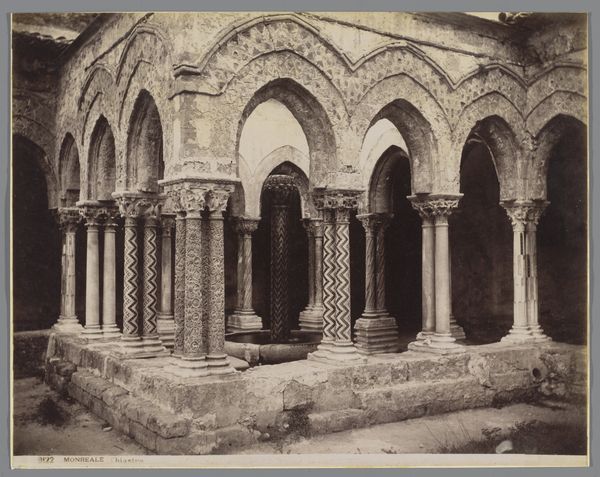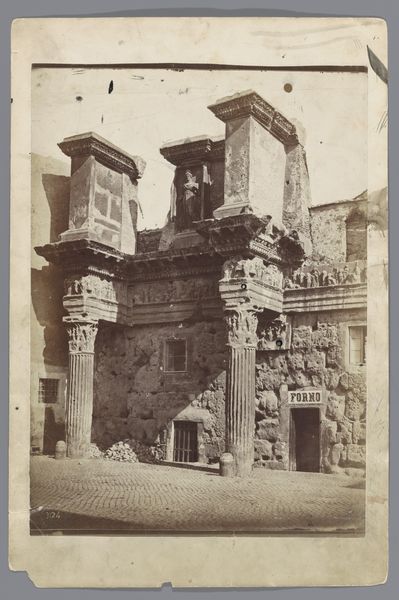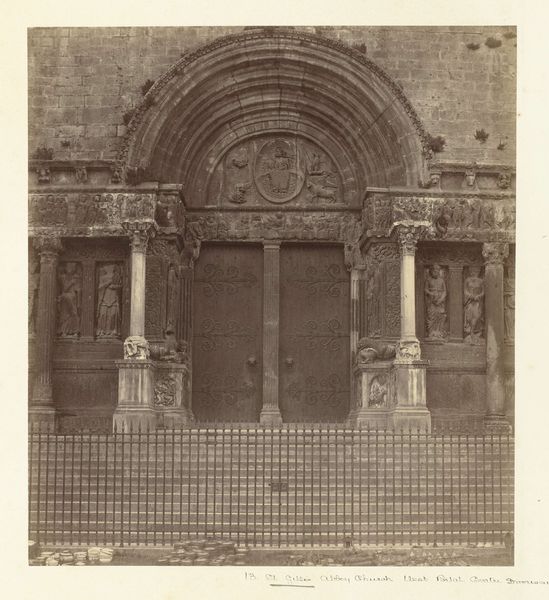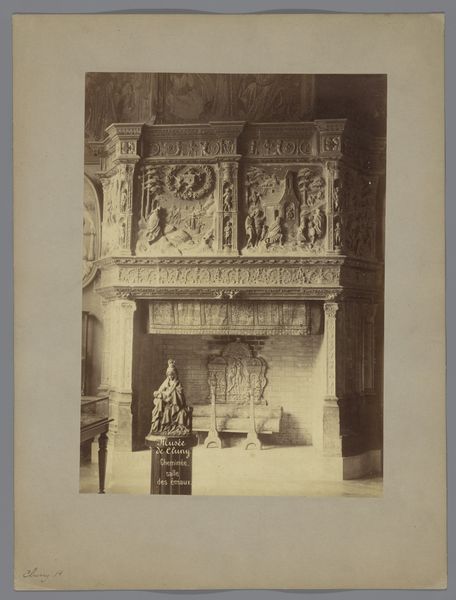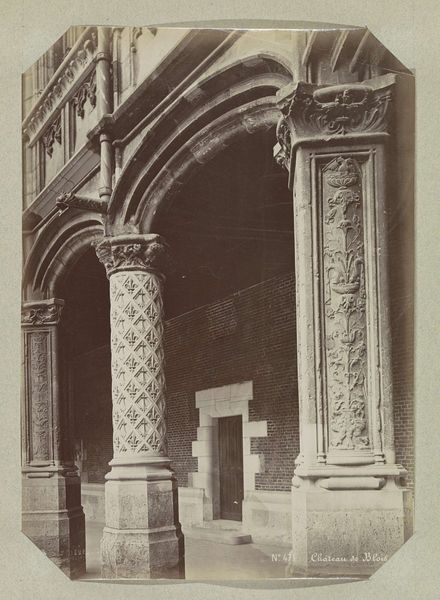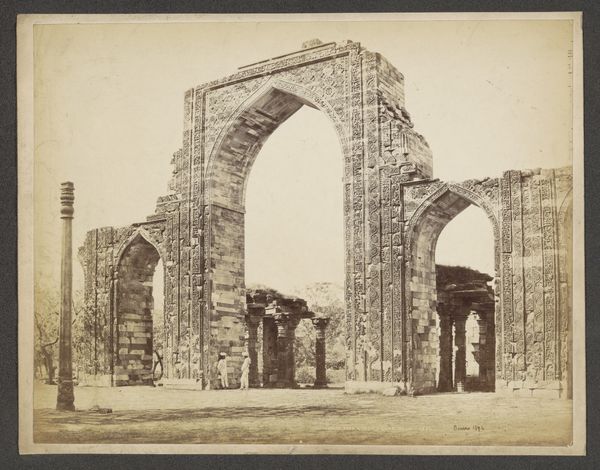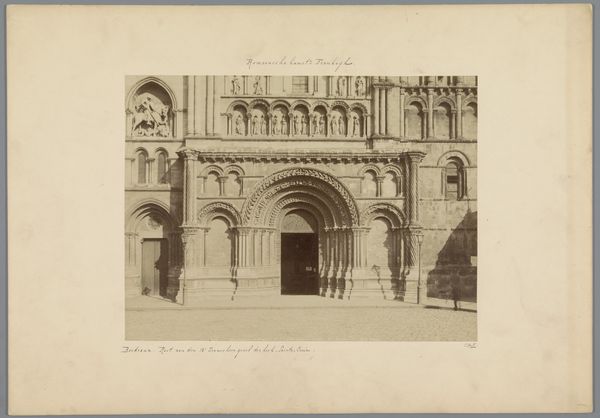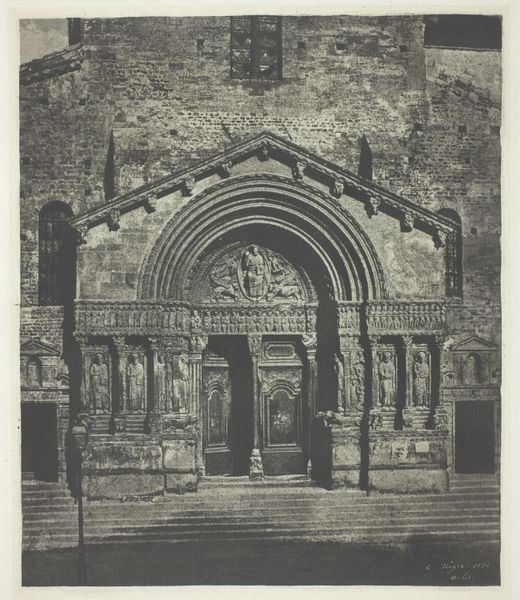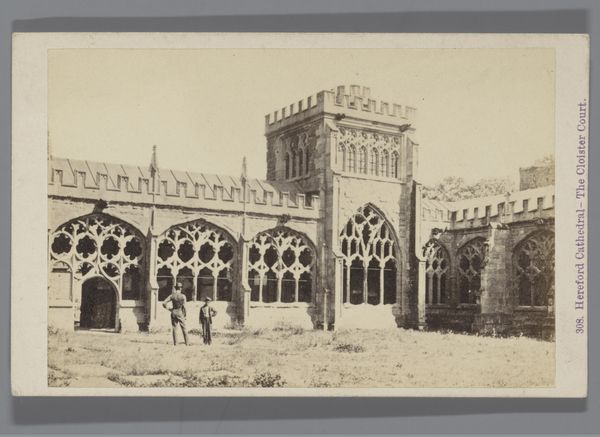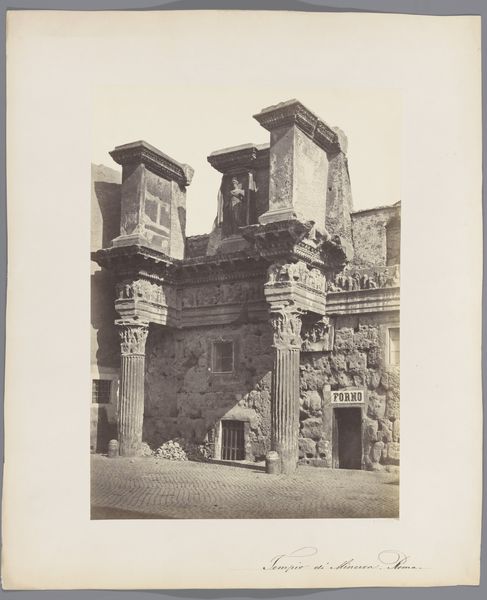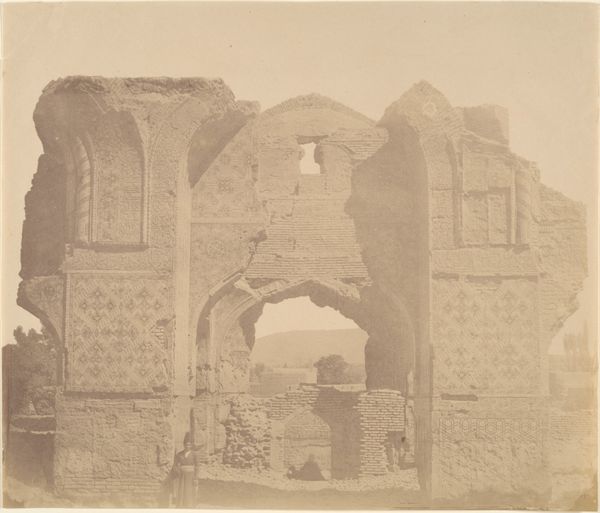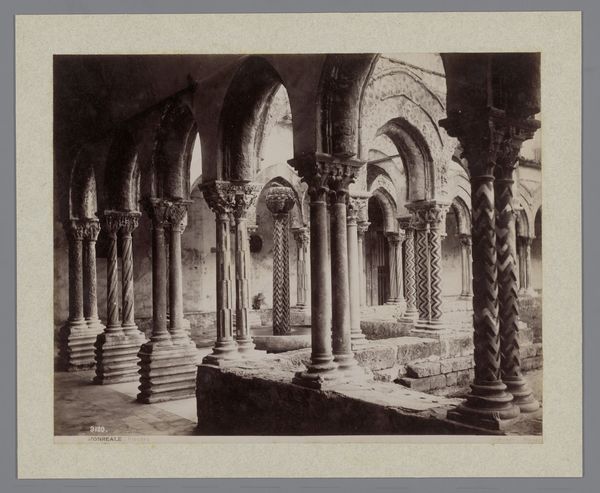
print, photography, albumen-print, architecture
# print
#
landscape
#
etching
#
photography
#
romanesque
#
geometric
#
cityscape
#
albumen-print
#
architecture
#
realism
Dimensions: height 267 mm, width 350 mm
Copyright: Rijks Museum: Open Domain
Curator: Let’s consider this arresting albumen print currently held at the Rijksmuseum. It is a photographic representation of the Saint-Trophime church in Arles, dating roughly from 1850 to 1900. Editor: My first thought is how monumental this structure appears! The artist really captured a sense of permanence and authority, even through the softened, sepia tones of the print. It makes you feel like a small part of something vast and ancient. Curator: Indeed, it prompts us to reflect on the intersection of power, religion, and public space during this period. Religious architecture held significant sway over the collective social consciousness, and photographs such as this helped to disseminate idealized visions of civic pride. The Church would be actively involved in these constructions for obvious reason, yes? Editor: Absolutely. We can also examine this image through the lens of architectural photography itself. Think about who had access to this technology at the time, and what statements are made through choices in composition and perspective. Were marginalized groups granted similar representational opportunities, for instance? Who controlled the narrative, so to speak? Curator: That’s spot on. Furthermore, considering it an anonymous work raises interesting questions around artistic intent. Was it a straightforward record, or were deeper ideologies intentionally embedded into its visual encoding through specific formal decisions? The play of light and shadow creates these dramatic details on the textured facade for example. Editor: We can also explore how photography, especially landscape photography, contributed to evolving definitions of realism in art, challenging the dominance of painting while reinforcing the male gaze in new and potent ways. I am really thinking about the cultural power the work emanates. Curator: An essential point. So, ultimately, what are we left to contemplate? Editor: It pushes us to consider not only the Saint-Trophime church's physical presence, but also its far reaching ideological implications and symbolic meanings as captured through a specific, historically conditioned photographic practice. Curator: Yes. The picture acts as an echo of those power dynamics frozen in a specific moment in history, offering opportunities for a renewed perspective of its socio-political importance.
Comments
No comments
Be the first to comment and join the conversation on the ultimate creative platform.
